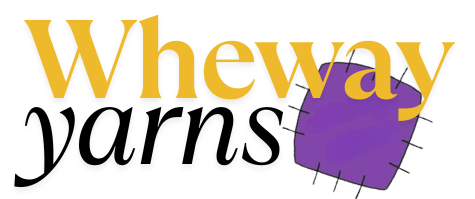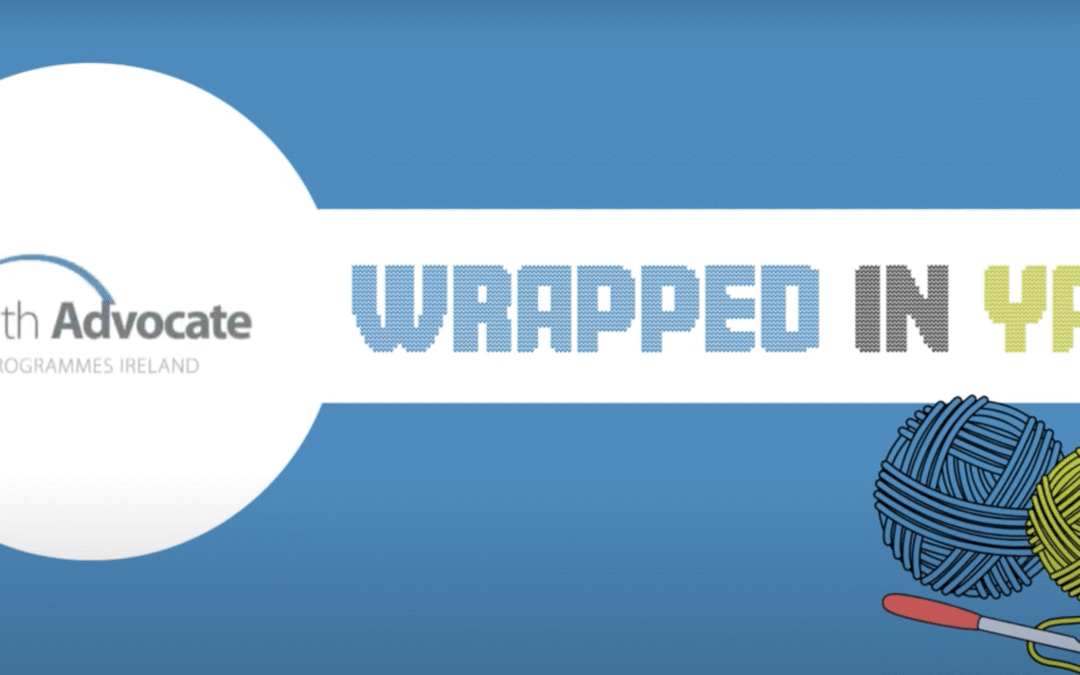Some of the best ideas are born over good food, good company… and perhaps a glass of wine.
It was the evening after YAP’s annual all-staff away day, a time when we gather to reflect on our successes, challenges, and the year ahead. I was chatting with two of YAP’s brilliant data scientists, Marianne Breen (Data & Communications Manager) and Trish McGinley (Data Resource Administrator). They spend their days collecting and analysing key information to help improve YAP’s services and measure the impact of their work.
Alongside my role as a facilitator, I’m also a textile artist. I turn data into art through yarn craft. As our conversation unfolded, the “Wrapped in YAP” project took root.
Soon, more collaborators joined us, including team leaders Paula Whitty (Dublin North) and Carolyn Marx (Dublin South), who brought an enthusiastic group of parents on board. Together, we set ourselves a challenge: to create a crafted textile piece (or two) that represents over a decade of data from more than 700 young people, reflecting on how their lives have changed since participating in YAP.
Weaving the Process
Although I’ve created several “data craft” projects before, from a temperature-and-rainfall scarf tracking 50 years of weather on a birthday, to a crochet piece exploring child homelessness in Ireland, this was my first time working collaboratively.
The process was everything collaboration should be: joyous, confusing, insightful, and full of laughter. And the final work? Something I could never have created alone.
The data itself told a clear story:
- 52% felt their problems were much better after YAP
- 35% felt they were a bit better
- 11% felt about the same
- 1% felt a bit worse
- 1% felt much worse
We chose crochet squares as our medium, each square representing 1% of the responses. A hundred squares stitched together became a tactile, visual translation of the numbers.
When we realised the squares could be connected to form a wrap — symbolising YAP’s “wraparound” approach to supporting young people — the project’s name became obvious: Wrapped in YAP.
Letting Go & Trusting the Group
Using YAP’s corporate colour palette to code the data, we faced our next challenge: deciding on the layout. That’s when the parents joined in.
This was, for me, the most challenging part of collaboration. I had to let go of my own “right” way of arranging the squares and trust the group’s collective wisdom. That trust paid off.
In fact, this mirrored something at the heart of YAP’s work. Just as we each stepped outside our creative comfort zones to try something new, so do the young people YAP supports, inviting others into their lives in the hope of creating better outcomes.
When the Negatives Take Centre Stage
Interestingly, the layout we agreed on placed the negative and neutral responses at the centre, two squares of “worse” surrounded by eleven of “same”, with the overwhelmingly positive 87% wrapping around them.
At first, I resisted. But then I realised how much this reflects human nature. When a child scores 98% on an exam, what’s the first question some parents ask? “Where did you lose the 2%?”
By centring the minority experiences, we acknowledge them fully, not to diminish the positives, but to ensure the whole story is honoured. And in our wrap, those harder experiences are literally held in a sea of positive blues… once again, wrapped in YAP.
Text & Textile — One Language
When we presented the piece at YAP’s Annual Report launch in the spring, I was thrilled. And I can’t wait to see what the parent group has created with their own data.
While working on this project, I discovered that “textile” and “text” share the same Latin root: texere, meaning “to weave.” One author suggested that “textiles could have been a form of language even before the advent of writing” (Rigby & Tarbuck, 2022).
I like to think that’s exactly what we’ve done here — woven numbers into something that can be read, felt, and understood by everyone.
It has been an honour to work on Wrapped in YAP, and I’m excited to see where our collaboration might take us.

